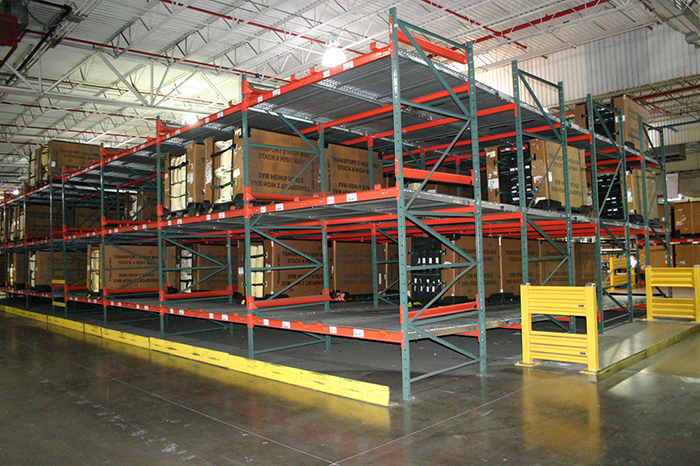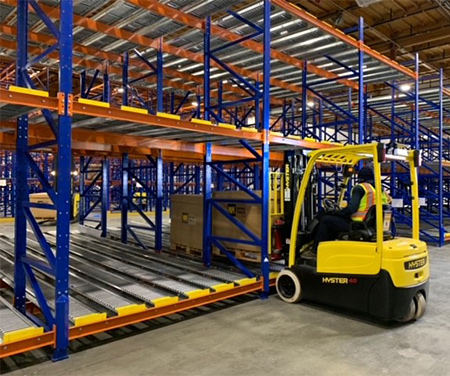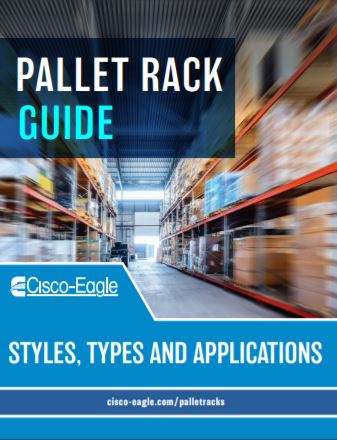Pallet Flow Maintenance – What Matters?
Ensure smooth operation with consistent inspections, guidelines and evaluation

Your pallet flow system produces a smooth, orderly process first-in, first out product flow. To ensure it performs, regular inspections and timely repairs are essential. Although pallet flow systems typically require minimal maintenance, proper employee training and consistent checks can help avoid misuse and prolong the life of your equipment. Pallet flow systems are built to flow heavy pallets from infeed to picking, using brakes and dampeners. Over time, these components must be inspected, maintained or even replaced for optimum, safe performance.
Your process doesn’t need to be complex. It needs to be consistent. The basics apply here and keep your procedures easy to follow and achievable.
Good pallet flow performance is about taking the time to review and inspect.
What are pallet flow maintenance basics?
Start with a schedule
Well-maintained, higher performance pallet flow systems starts with a structured schedule. Review your system as a team and create the right procedures and items to inspect and conditions to watch from the very first day.
First, set a baseline when your system is installed.
This is critical to future inspections since your system is in place but unused at this point. Once that’s established, you can review various factors the first time and every time. Conduct an initial visual inspection within a few days of installation. During this inspection, you’ll check for the following:
- Connections: Check all bolts, nuts, and other fasteners for tightness. The key here is to ensure all components are ready to do their job from the start.
- Debris: Remove any debris or obstructions from the floor around the system. You don’t want your system to work harder than it has to with debris in the way.
- Hardware: Ensure no extra hardware is left on the floor, which can be a tripping hazard.
Conduct a thorough inspection one month after installation to confirm that everything is working properly, and then follow up with inspections every three months. Remember to use your checklist, paying special attention to signs of wear and tear and any spots that have been previously repaired.
Read more: Pallet rack safety evaluation
Inspect for top performance

Keep your eye(s) on the system
As mentioned, you want frequent visual examinations. For example, you want to check the rack and support rails for any damage caused by forklifts, such as bent or broken components, dents or other signs of impact damage.
Also repeat this mantra: cleanliness is flowing-ness (I just made that up). Keep the rails and rollers clean, ensuring they are free from debris that could impede movement.
Additionally, inspect impact zones for damaged or missing rollers or wheels. Replace any damaged components by loosening the bolt/shaft and lock nut, removing the damaged wheel, replacing it, and tightening the connections.
Don’t forget to evaluate your flow rack in action
Employee-Owner Ross breaks down pallet storage selectivity vs. storage density
Besides just giving things a good look-over, hands-on inspections are just as important. Give the speed controllers a twist to ensure they turn smoothly—if you notice the pallets surging forward, that could mean there’s a poor connection with the controllers or some damage. If they slow down suddenly, the controller might be freezing up.
Don’t forget to test the pallet separators. First, unload the lane, then press the separator by hand to check that the stopper moves as it should. If you’ve got dual pallet separators, make sure to test both the front and rear ones.
Keep an ear out for strange noises like grinding—this could indicate damage that needs fixing. Also, double-check that all the springs are intact and doing their job. Secure any fasteners—make sure bolts and connectors are tight, from beams to uprights, row spacers to uprights, floor anchors, flow rails to beams or mounting tabs, and entry guides.
Read more: Resolving pallet flow jams
Create a Pallet Review Program

The condition of your pallets is key to keeping your system running smoothly. To ensure everything stays on track, set up a regular review process:
- Wooden pallets – Check for missing or splintered boards and fix or replace them as needed. Make sure nails are hammered in or removed to prevent system damage. Also, ensure the pallet surface is smooth and even, free from any bumps or irregularities.
- Plastic pallets – Inspect all pods and runners to confirm they’re intact. If you find any broken or missing parts, replace them. Trim away any excess plastic that might interfere with the rollers.
Lastly, always verify that your pallets match the design specs of your system and stay within the recommended weight range. This helps prevent overloading and keeps everything running efficiently.
By sticking to these detailed steps, you’ll keep your pallet flow rack system in top shape, which means smoother and more efficient warehouse operations.
Regular maintenance and inspections don’t just extend the life of your equipment—they also boost safety and productivity. Train your team thoroughly, keep a close eye on things, and your pallet flow system will reliably serve you for years.
Employee-Owner Jeremy discusses safe methods for resolving pallet flow jams
Download our Pallet Rack Guide
Pallet rack enhances your warehouse and improves overall facility performance when correctly specified, laid out and installed for the right load in the right positions. Check out our guide to specifications, styles, accessories and applications with expert tips from our employee-owners.
You’ll find quick, useful information on racks and how you can use them more effectively.
Download the guide today
Evan Fleishacker




